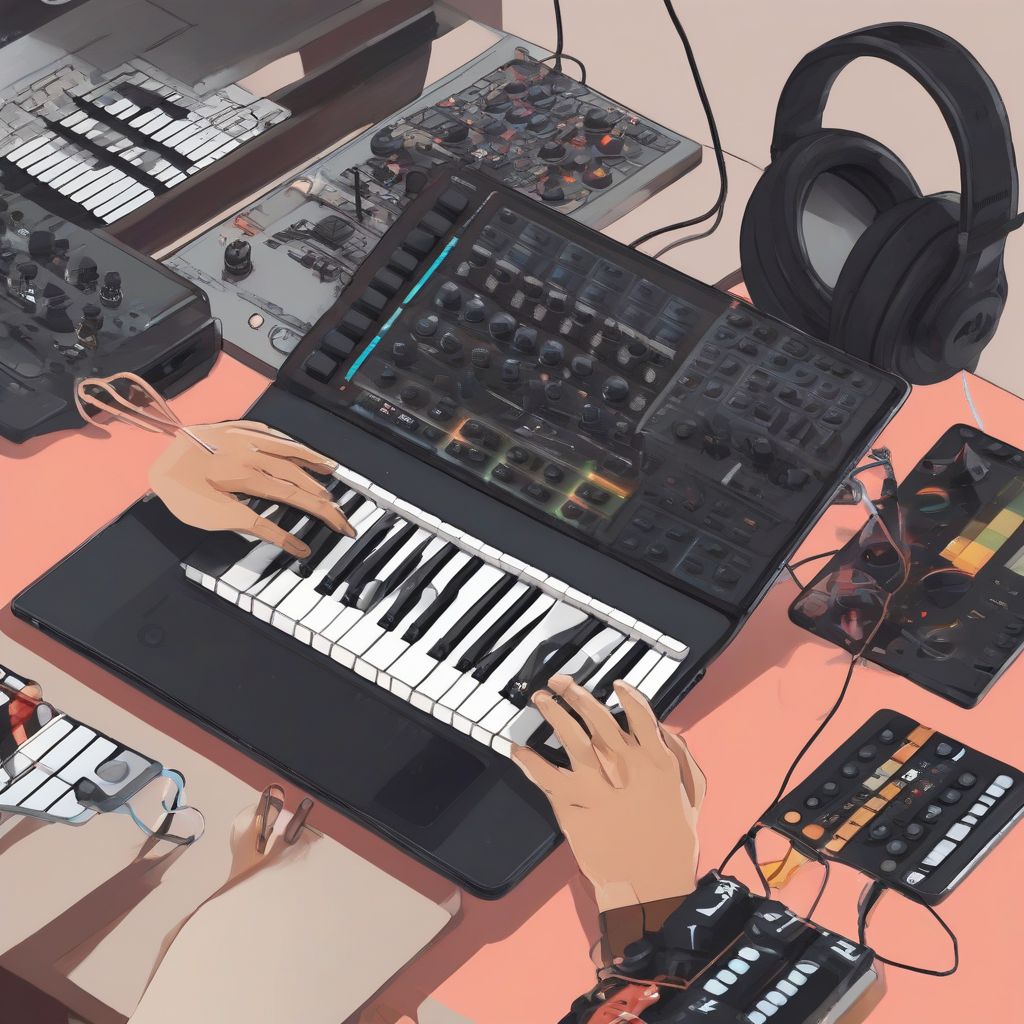Have you ever felt restricted by the limitations of your computer keyboard and mouse when trying to create music? Do you dream of effortlessly translating the melodies in your head into tangible sounds? Enter the world of MIDI controllers, the key to unlocking a seamless and intuitive music production experience.
What is a MIDI Controller and How Does it Work?
A MIDI controller is a physical piece of hardware that sends MIDI (Musical Instrument Digital Interface) data to your computer or other MIDI-equipped devices. Think of it as the conductor’s baton, directing the orchestra of software instruments and sounds within your digital audio workstation (DAW).
Unlike traditional instruments, MIDI controllers don’t produce sound themselves. Instead, they transmit signals that trigger and manipulate sounds generated by software or hardware synthesizers. This data includes information about the notes played, their velocity (how hard a key is pressed), pitch bend, modulation, and other expressive controls.
The Transformative Power of MIDI Controllers: Enhancing Your Workflow
While a mouse and keyboard can technically handle MIDI input, a dedicated controller revolutionizes your workflow, making music production:
1. More Intuitive and Expressive:
Imagine playing a realistic piano keyboard or strumming a guitar instead of clicking notes on a screen. MIDI controllers provide tactile feedback, allowing for natural expression and nuanced performances that breathe life into your music.
2. Faster and More Efficient:
Navigating menus and adjusting parameters with a mouse can be tedious and time-consuming. MIDI controllers offer hands-on control, allowing you to tweak sounds, adjust levels, and trigger effects in real-time, significantly speeding up your workflow.
3. Enhanced Creativity and Experimentation:
The tactile nature of MIDI controllers encourages exploration and improvisation. Easily experiment with different sounds, rhythms, and effects, leading to unexpected musical discoveries and fostering your creative flow.
 MIDI Keyboard Connected to Computer
MIDI Keyboard Connected to Computer
Choosing the Right MIDI Controller for Your Needs
The world of MIDI controllers offers a vast array of options, each tailored to different needs and workflows. Here’s a quick guide to help you choose the perfect fit:
1. Keyboard Controllers:
The most common type, offering a familiar piano-style layout ideal for playing melodies, chords, and basslines. Consider the number of keys, key action (weighted, semi-weighted, synth-action), and additional features like pads, faders, and knobs.
2. Pad Controllers:
Popular for beat-making and electronic music production, featuring pressure-sensitive pads for triggering drum samples, loops, and one-shots. Look for features like velocity sensitivity, RGB lighting, and customizable pad assignments.
3. Drum Controllers:
Designed to emulate the feel of playing an acoustic drum kit, featuring pads or triggers that correspond to different drum and cymbal sounds. Ideal for drummers who want to record directly into their DAW with a realistic feel.
4. Specialty Controllers:
From wind controllers to DJ controllers, these specialized options cater to specific instruments or workflows. Explore these if you have unique needs or want to control specific parameters within your DAW.
[amazon bestseller=”midi controller”]
Integrating a MIDI Controller into Your Setup
Setting up a MIDI controller is usually a straightforward process:
-
Connect: Connect your controller to your computer via USB or a dedicated MIDI interface.
-
Install Drivers: Install any necessary drivers for your specific controller model.
-
Configure Your DAW: Open your DAW and navigate to the MIDI settings to ensure it recognizes your controller.
-
Start Creating: Assign controls, map parameters, and let your musical inspiration flow!
Conclusion: Unleash Your Musical Potential
Investing in a MIDI controller is an investment in your musical journey. It’s a tool that empowers you to translate your musical ideas into reality with ease, speed, and unparalleled expression. Whether you’re a seasoned producer or just starting, a MIDI controller can significantly enhance your workflow and unlock a world of creative possibilities.
Do you have any experiences with MIDI controllers you’d like to share? Let us know in the comments below! And be sure to explore our other articles for more tips and insights on music production and sound design.
